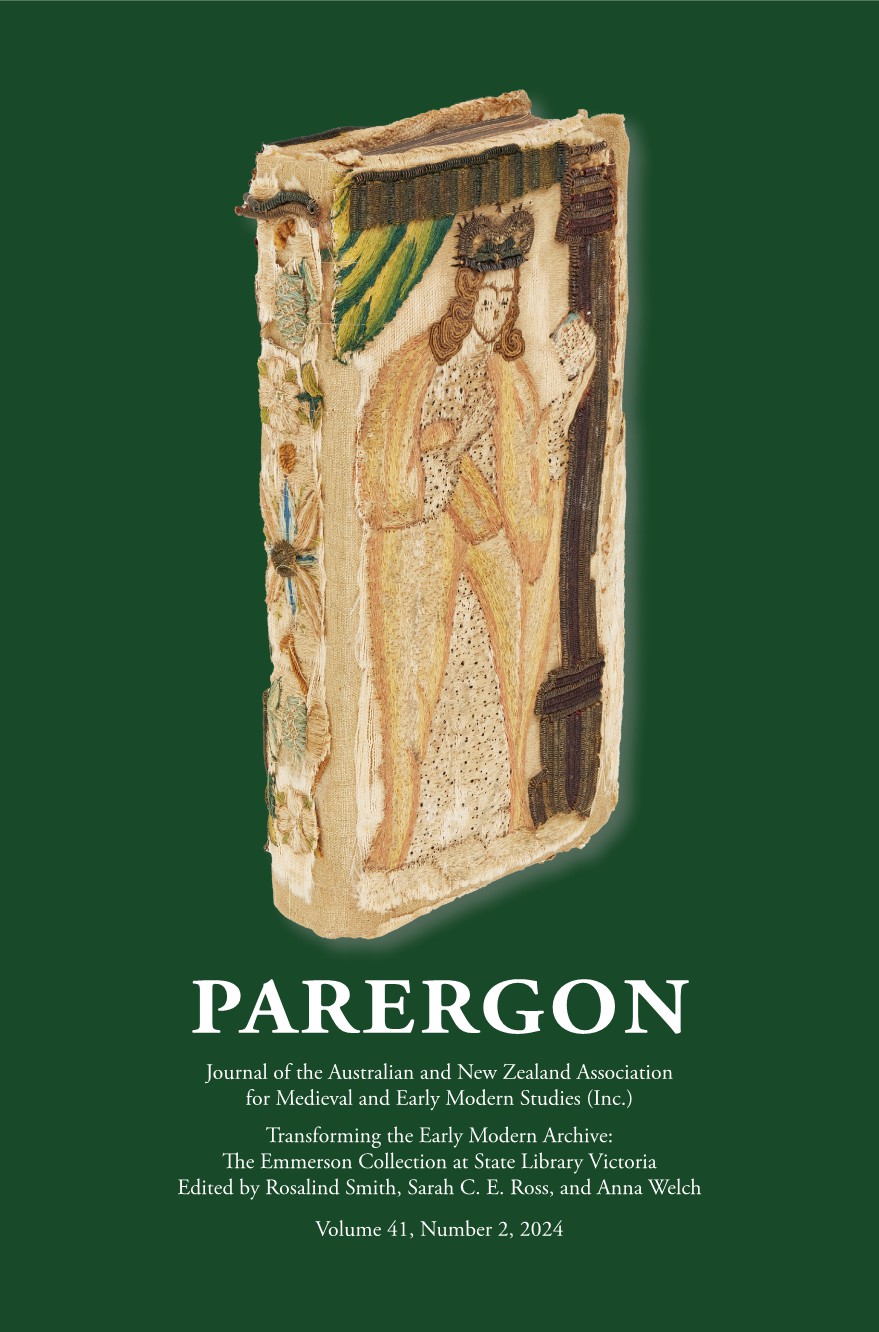Marginalia as Texts: Early Modern Marks in the Emmerson Collection
Abstract
When John Emmerson’s collection of over 5000 early modern rare books entered public hands in 2015, a new corpus of sixteenth and seventeenth-century marginalia within those books became available for analysis for the first time. Rather than studying this exciting new body of marks primarily as evidence of reading, this article takes up the idea of marginalia as a collection of ‘texts’, subject to generic convention and available to formalist literary analysis. It provides a taxonomy of kinds of marginalia found in the collection, from marks of ownership through reader annotation to marks of recording, followed by an analysis of these kinds in the near complete run of editions of Philip Sidney in the collection (1593-1674). Through these examples, I argue for a new approach to marginalia that focuses on form: textual, visual and material. This approach is shaped by John Emmerson’s collecting practices and the distinctive contours of the Emmerson collection, allowing us to rethink what marginalia is and who might be considered to be marginalists in early modern England.
